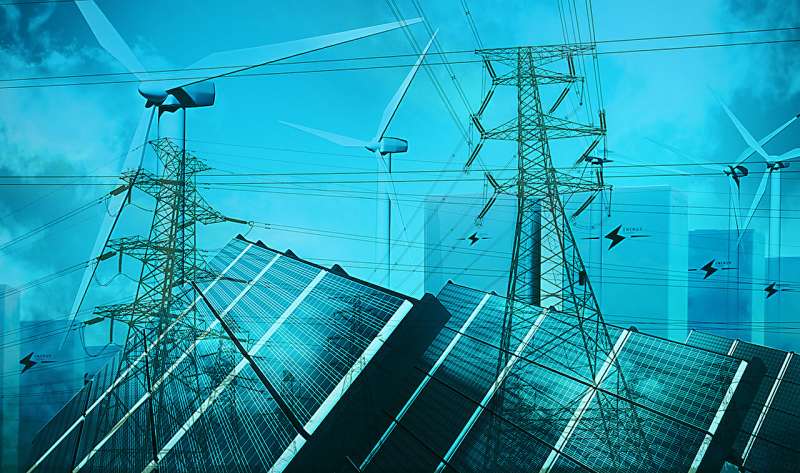This article has been reviewed according to Science X's editorial process and policies. Editors have highlighted the following attributes while ensuring the content's credibility:
fact-checked
peer-reviewed publication
trusted source
proofread
Modeling energy storage for a decarbonized future

According to the Smart Electric Power Alliance, nearly 75% of Americans are served by an electric utility with a target to fully decarbonize during the next 30 years. As policies are implemented by government and corporate entities to work toward achieving net-zero greenhouse gas emissions, optimized long-term electricity-system planning as it pertains to energy storage (ES) is necessary to inform stakeholders in making policy and investment decisions.
A team of researchers including Ramteen Sioshansi surveyed literature to identify challenges faced in current modeling systems, as well as opportunities to explore further improvements to these models. Their work was published in Nature Energy.
"Energy-storage technologies are going to become more important as we move to a future in which we can rely less on fossil-fuels to keep the lights on," said Sioshansi, a professor of engineering and public policy and director of the Carnegie Mellon Electricity Industry Center.
The review focused on capacity expansion modeling (CEM), a suite of tools that is used often to simulate how electricity systems should be built to balance the need to eliminate carbon emissions, while also considering affordability and system reliability. Currently, energy storage technology is incorporated sparingly, if at all, in these modeling tools.
New approaches to CEM are essential as the shift to clean energy faces changes and challenges. Among these changes include growth in renewable energy, such as wind and solar. As these resources will constitute a large share of electricity generation in the future, they will require adjustments to how electricity systems are operated to maintain power, even during cloudy or calm-wind days. Because these electricity sources are affected largely by weather, the data collected in relation to this component of planning is amplified further as there will be an increased need to use stored energy when there is a deficit caused by weather conditions.
Societal implications are also considered in this review, as there are opportunities for energy investments in low-income communities, which are being supported through the recently passed Inflation Reduction Act. By expanding CEM to consider additional factors that are specific to energy justice, these historically underserved communities could be empowered further to become energy-independent and experience benefits to their quality of life.
"Improving the way that energy storage is captured in CEM can help to meet the trifecta of lowering emissions, keeping costs reasonable, and maintaining or improving the reliability of electricity service to customers," says Sioshansi. "These tools could be vastly transformational."
The analysis provided by Sioshansi and his colleagues culminates in recommendations of further collaborative research that will enhance the integration of ES in CEM, including technology representation, system representation and markets, policy, and societal considerations. By engaging stakeholders from a variety of disciplines to improve modeling practices, a wider range of decarbonization pathways, trade-offs, and objectives can be considered for implementation.
More information: Todd Levin et al, Energy storage solutions to decarbonize electricity through enhanced capacity expansion modelling, Nature Energy (2023). DOI: 10.1038/s41560-023-01340-6. www.nature.com/articles/s41560-023-01340-6
Journal information: Nature Energy





















